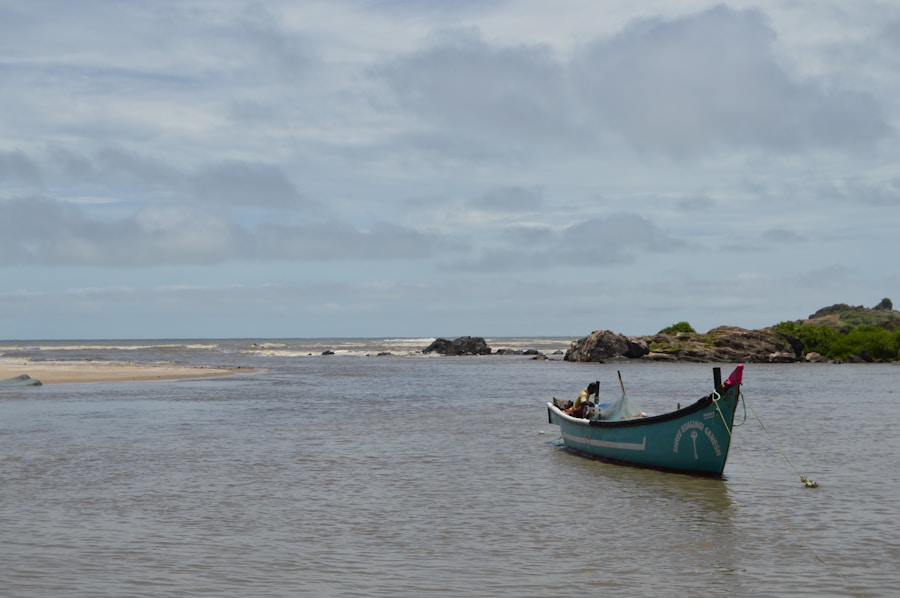Download links
How to install The Ultimate Guide to Ocean Fishing APK?
1. Tap the downloaded The Ultimate Guide to Ocean Fishing APK file.
2. Touch install.
3. Follow the steps on the screen.
Description
Selecting the ideal location for ocean fishing is a critical step that can significantly influence the success of your fishing expedition. The ocean is vast and varied, with different regions offering unique opportunities and challenges. Factors such as water depth, proximity to land, and the presence of underwater structures like reefs or wrecks can determine the abundance and variety of fish species available.
For instance, many anglers find that fishing near rocky outcrops or coral reefs can yield a rich catch, as these areas provide shelter and feeding grounds for various fish. Additionally, understanding the migratory patterns of fish species can help in pinpointing the best locations during specific seasons. Another important consideration is the type of fishing you intend to pursue.
For example, if you are interested in deep-sea fishing, you will need to venture further offshore, often requiring a boat equipped for such journeys. Conversely, if you prefer surf fishing, you might focus on coastal areas where waves break over sandbars or rocky shores. Local knowledge can be invaluable; engaging with local fishing communities or guides can provide insights into the best spots based on recent catches and seasonal changes.
Furthermore, utilizing technology such as fish finders or GPS can enhance your ability to locate productive fishing grounds, allowing you to maximize your time on the water.
Key Takeaways
- Choose a location with abundant marine life and suitable fishing regulations for a successful ocean fishing experience.
- Essential gear includes a sturdy fishing rod, reels, lines, hooks, and appropriate safety equipment for ocean fishing.
- Understanding tides, currents, and weather patterns is crucial for maximizing your catch and ensuring safety while ocean fishing.
- Use live bait, artificial lures, or a combination of both to attract a variety of fish species while ocean fishing.
- Prioritize safety by wearing a life jacket, checking weather forecasts, and being aware of potential hazards while ocean fishing. Additionally, practice catch and release and follow sustainable fishing practices to conserve marine resources.
Essential Gear and Equipment for Ocean Fishing
The Right Gear for Ocean Fishing
Ocean fishing requires specific gear and equipment to ensure a successful experience. The choice of rod and reel is crucial, as saltwater species are larger and stronger than freshwater fish.
### Rods and Reels
A sturdy rod with a high line capacity is essential for ocean fishing, as larger fish like tuna or marlin can put up a significant fight. Spinning reels or conventional reels are popular choices among ocean anglers, with many opting for reels that have a high gear ratio to facilitate quick retrievals.
### Lines, Hooks, and Terminal Tackle
In addition to rods and reels, other essential equipment includes fishing lines, hooks, and terminal tackle. Braided lines are often preferred due to their strength and sensitivity, enabling anglers to feel even the slightest nibble. Hooks should be selected based on the target species; for instance, circle hooks are commonly used for catch-and-release practices as they tend to hook fish in the corner of the mouth, minimizing injury. Terminal tackle such as swivels, sinkers, and leaders also play a crucial role in ensuring that your setup is effective and can withstand the rigors of saltwater fishing.
Understanding Tides, Currents, and Weather Patterns

A comprehensive understanding of tides, currents, and weather patterns is essential for any angler looking to optimize their ocean fishing experience. Tides are caused by the gravitational pull of the moon and sun, resulting in periodic rises and falls in sea levels. These tidal movements can significantly affect fish behavior; many species are more active during certain tidal phases.
For example, the period just before high tide is often considered prime time for fishing as fish move closer to shore to feed on baitfish that are swept in by the rising water. Currents also play a vital role in ocean fishing. They can influence where fish congregate and how they behave. Strong currents can push baitfish into specific areas, attracting larger predatory species.
Understanding how to read current patterns can help anglers identify productive fishing spots. Additionally, weather conditions such as wind speed and direction can impact both fish activity and safety on the water. Overcast days may lead to increased feeding activity among certain species, while bright sunny days might push fish deeper into cooler waters. Monitoring weather forecasts and being aware of changing conditions can enhance an angler’s chances of success.
Identifying the Best Bait and Lures for Ocean Fishing
| Bait/Lure Type | Effectiveness | Common Fish Species |
|---|---|---|
| Live Shrimp | High | Snapper, Grouper, Tarpon |
| Cuttlefish | Medium | Kingfish, Tuna, Mahi-Mahi |
| Squid Jig | High | Squid, Octopus, Cuttlefish |
| Artificial Jig | High | Snapper, Grouper, Amberjack |
| Surface Popper | High | Tuna, Kingfish, Barracuda |
Choosing the right bait and lures is crucial for enticing fish in the ocean’s diverse ecosystems. Live bait is often favored by many anglers due to its natural movement and scent, which can be irresistible to predatory fish. Common choices include live shrimp, mullet, or squid, each appealing to different species depending on their feeding habits.
Artificial lures also play a significant role in ocean fishing strategies. Jigs, spoons, and soft plastics are popular options that can be used effectively in various conditions.
Jigs are particularly versatile; they can be fished at different depths and retrieved at varying speeds to mimic injured baitfish. Spoons are effective for covering large areas quickly, while soft plastics can be rigged in numerous ways to imitate different types of prey. The color and size of lures should be matched to local forage species; bright colors may work well in murky waters while more natural hues are often better in clear conditions.
Safety Tips and Guidelines for Ocean Fishing
Safety should always be a top priority when engaging in ocean fishing due to the inherent risks associated with being on open water. One of the most critical safety measures is wearing a life jacket or personal flotation device (PFD) at all times while on a boat or near deep water. Even experienced anglers can encounter unexpected situations such as rough seas or sudden weather changes that could lead to capsizing or falling overboard.
Additionally, it is essential to have a well-stocked safety kit on board that includes items such as flares, a first aid kit, a whistle, and a fire extinguisher. Communication devices like VHF radios or satellite phones should also be part of your gear to ensure you can call for help if needed. Before heading out, it’s wise to inform someone about your plans, including your expected return time and location.
This way, if something goes wrong, others will know where to look for you.
Conservation and Sustainability Practices in Ocean Fishing

Responsible Angling Practices
Overfishing poses a significant threat to marine ecosystems; therefore, responsible anglers must adhere to local regulations regarding catch limits and size restrictions. Many regions have implemented measures such as seasonal closures or designated no-fishing zones to allow fish populations to recover.
Sustainable Catch-and-Release Techniques
Practicing catch-and-release techniques is another way anglers can contribute to sustainability efforts. Using circle hooks minimizes injury to fish during capture, increasing their chances of survival when released back into the water. Additionally, educating oneself about local species and their conservation status can help anglers make informed decisions about which fish to target and which to release.
Protecting Marine Life for Future Generations
By adopting sustainable practices, anglers not only protect marine life but also ensure that future generations can enjoy the sport of ocean fishing as well.
If you’re interested in ocean fishing, you may also enjoy reading about the popular mobile game Clash of Clans 2. Check out the article here to learn more about this exciting game.
FAQs
What is ocean fishing?
Ocean fishing, also known as deep sea fishing, is the practice of catching fish and other marine species in the open ocean. It typically involves fishing in waters that are deeper than 100 feet.
What types of fish can be caught through ocean fishing?
A wide variety of fish can be caught through ocean fishing, including tuna, marlin, swordfish, mahi-mahi, snapper, grouper, and many others. The specific types of fish that can be caught depend on the location and the time of year.
What equipment is typically used for ocean fishing?
Ocean fishing often requires specialized equipment, including large fishing rods and reels, heavy-duty fishing line, bait, and lures. Additionally, ocean fishing may involve the use of a boat equipped with navigational and fish-finding technology.
Where are popular ocean fishing destinations?
Popular ocean fishing destinations include the Gulf of Mexico, the Caribbean Sea, the Pacific Ocean, and the Atlantic Ocean. Each of these locations offers unique opportunities to catch different species of fish.
What are the regulations for ocean fishing?
Regulations for ocean fishing vary by location and can include restrictions on catch limits, size limits, and fishing seasons. It is important for ocean fishermen to familiarize themselves with local regulations and obtain any necessary permits or licenses before fishing.





